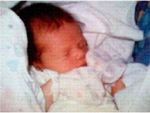
If only I hadn't let my National Geographic subscription expire thirty years ago, I totally would've known this already: some of the indigenous people in Central and South America have a tradition of giving birth standing up or sitting. The Peruvian Health Ministry says it reduces pressure on the uterus, increases fetal blood flow, and shortens labor and delivery times.
Which doesn't mean it's a technique that's supported in many hospitals and clinics. In fact, it's rare enough in Peru that Reuters sent a photographer to report on an indigenous-friendly clinic in Cuzco.
And despite the upbeat government hype, it's a practice that's looked down upon in places like Panama, where the UN reports that many Ngobe moms prefer to give birth at home instead. And so they all have like 12 kids by the time they're 35, which means they never leave the house.
Standing Room Also: Belempampa Health Clinic photoset by Reuters [daylife.com via dt reader sara]
Risking Death to Give Life in Panama's Tropical Forests: Maternal health among the Ngöbe people [unfpa.org]





I worked in a NICU for a while in Bakersfield... had more than one mom get up from her labor bed, lay a sheet on the floor and commence to birth while standing or squatting. No amount of cajoling could get her to get back on the bed. Needless to say, this freaked me out for the first couple of episodes I attended (NICU nurses usually attended births "just in case", was a great experience and even better birth control for a young, twenty-something nurse).
There are fancy birth chairs and such that one can obtain for this, or birth on all fours. Gravity can be your friend.
I'm a little puzzled as to why this is "news", although I guess I watch enough of those "birth story" type TV shows -- all of which inevitably show the laboring mother lying in bed while the full force of medical science is forcefully applied to her rather than being an active participant in her own child's birth -- to understand why.
I gave birth to my son at a birth center, and was semi-standing for almost all the pushing portion of my labor. It just seemed to be the most natural position to be in (and gravity works, you know) and was also the least painful. It also helped my labor to be very, very short -- about three hours from the time my water broke to the time my son was born. The midwives said it was really common for mothers to find standing, squatting or sitting up to be the most comfortable position, and I'm sure you know that western Europeans used a "birthing chair" for hundreds of years before we moved to women being put on their backs for labor.
The way modern medical science has rendered women into virtual bystanders in their own labors fills books. It was great of you to bring attention to their being "another way" .... right up until that snark at the end. Not your usual style, I don't think.
sorry, I should have added "literally." to the end of that sentence. From the UN article:
They'll bring in a bar to hang onto and let you stand/squat even at the fancy, UES hospitals. As long as you don't get the epidural.
"The Business Of Being Born", the Ricki Lake documentary about birth in the USA shows a woman delivering standing up. It is quite common among midwife led deliveries.
At one of our birthing classes, they showed us the Peruvian government pro-squat video.
It's really old but it consisted of 20 minutes of women squatting and giving birth.
You can squat at hospitals here as long as you don't have the epidural.
I will say for me squatting alleviated some of the pelvic pressure but in the end during early labor.
You can't squat though if you have an epidural.
According to the birthing instructor, gravity helps and prevents unneccessary tearing/episiotomies because you are stretching out your perineum naturally.
However, it wasn't popular in the metropolitan areas of Peru because it is considered a 'rural' practice.
Personally, unless you have thighs of steel, maintaining this position without the birthing chair or bar would be difficult.
I gave birth standing up, as nothing else seemed right - standing up was the most natural, essential position - it was what my body wanted to do.
It's true that you get quite a bit of thigh-burn, though! But I swam almost every day of my pregnancy - I had a feeling I needed to be fit for the delivery.
I walked through all the contractions, going on tip toes for the strong ones. The last phase, where the contractions are pushing the baby out, was where they tried to get me to lie down and I said NO WAY! : )
She was born in 3 pushes once I understood I had to let go, and go with what was happening. She gave a tiny mewl, got 10 out of 10, fed, and went off into a perfect sleep for 6 hours. She was the happiest of newborns, and the most settled. And I was VERY happy.
My first baby, though, had been a totally different experience - almost everything they did in the hospital made what might have been fine into something dreadful.
Walk ... and walk .. and walk .. and give birth standing up. By far the best way, and that is no doubt why they do it like that in the Peruvian jungle, because they are eminently practical, and don't have stupid over-medicalisation of natural processes...